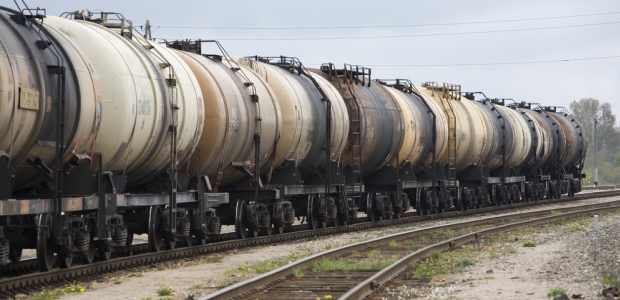
DOT Proposes DOT-111 Phase-Out, If Not Retrofitted
The agency has released details of an NPRM and an ANPRM, rulemaking efforts following the Pipeline and Hazardous Materials Safety Administration's rulemaking last fall.
Rules that the U.S. Department of Transportation is proposing would phase out the use of older DOT-111 tank cars to ship packing group I flammable liquids, including most Bakken crude oil, within two years unless the railcars are retrofitted to comply with new tank car design standards. DOT's Notice of Proposed Rulemaking proposes enhanced tank car standards, a classification and testing program for mined gases and liquids, and new operational requirements for high-hazard flammable trains that include braking controls and speed restrictions.
A separate Advance Notice of Proposed Rulemaking seeks input on expanding comprehensive oil spill response planning requirements for shipments of flammable materials. Both rulemakings are open for 60 days of public comment.
They follow the Pipeline and Hazardous Materials Safety Administration's rulemaking last fall that asked stakeholders for comments about enhancing standards for DOT-111 tank cars that are used to transport packing group I (materials posing great danger) and II (medium danger) hazmats. DOT received more than 152,000 comments in response.
The NPRM defines a high-hazard flammable train as a train carrying 20 or more tank carloads of flammable liquids (including crude oil and ethanol).
"Safety is our top priority, which is why I've worked aggressively to improve the safe transport of crude oil and other hazardous materials since my first week in office," Transportation Secretary Anthony Foxx said July 23. "While we have made unprecedented progress through voluntary agreements and emergency orders, today's proposal represents our most significant progress yet in developing and enforcing new rules to ensure that all flammable liquids, including Bakken crude and ethanol, are transported safely."
Included in these proposed rules are these elements:
- Proposes that carriers be required to perform a routing analysis for high-hazard flammable trains that would consider 27 safety and security factors and select a route based on that route analysis.
- Codifying DOT's May 2014 emergency order that require trains containing 1 million gallons of Bakken crude oil to notify State Emergency Response Commissions or other appropriate state-delegated entities about the operation of these trains through their states.
- Seeks comment on three speed restriction options for high-hazard flammable trains that contain any tank cars not meeting the proposed enhanced tank car standards: a 40-mph maximum speed restriction in all areas, a 40-mph speed restriction in high threat urban areas, and a 40-mph speed restriction in areas with more than 100,000 population. If tank cars in a high-hazard flammable train meet specifications for enhanced tank cars, speed would be limited to 50 mph in all areas.
- New standards are proposed for tank cars constructed after Oct. 1, 2015, that are used to transport flammable liquids as part of a high-hazard flammable train: thermal, top fittings, and bottom outlet protection; tank head and shell puncture resistance. PHMSA is requesting comment on three options for enhanced tank car standard requirements: Tank car option 1 would have 9/16 inch steel, would be outfitted with electronically controlled pneumatic (ECP) brakes, and would be equipped with rollover protection; Tank car option 2 would also have 9/16 inch steel but would not require ECP brakes or rollover protection; Tank car option 3 is based on a 2011 industry standard and has 7/16 inch steel and does not require ECP brakes or rollover protection.